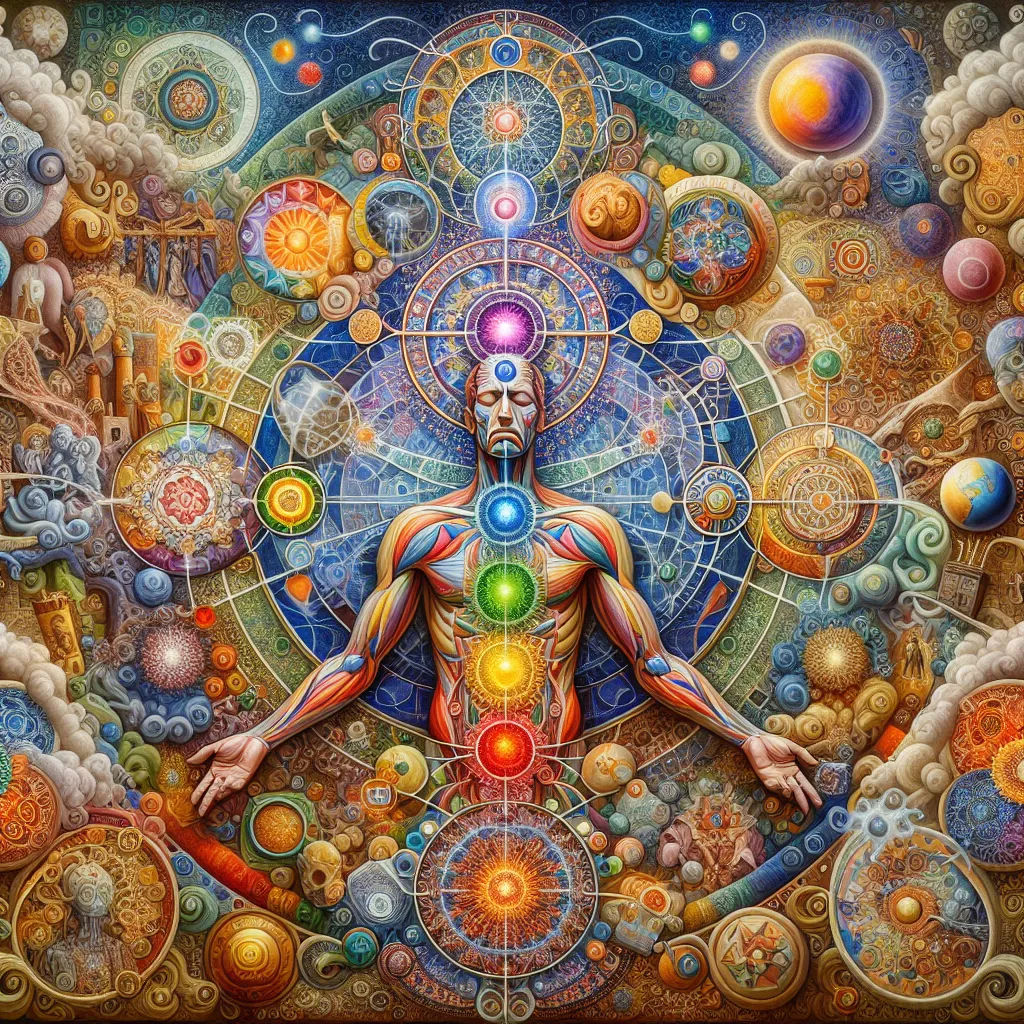
- Published on
- Authors

- Name
- You
The Chakras and Kundalini Energy: Bridging Advanced Science and Mystical Wisdom
Introduction
The world of Tantric practices introduces us to a profound system of energy centers known as chakras, and an extraordinary force called Kundalini energy. Both concepts have fascinated spiritual seekers and mystics for centuries. In this article, we will dive deep into the system of chakras, understanding their role and significance, and explore the transformative power of Kundalini energy. By integrating ancient wisdom with modern scientific insights, we aim to present a holistic view that is enriching for both the curious novice and the seasoned practitioner.
The System of Chakras
The chakra system consists of seven primary energy centers aligned along the spine. Each chakra corresponds to specific physical, emotional, and spiritual aspects of our being.
| Chakra | Location | Associated Color | Element | Key Aspects |
|---|---|---|---|---|
| Muladhara | Base of the spine | Red | Earth | Survival, Stability |
| Svadhisthana | Lower abdomen | Orange | Water | Emotions, Sexuality, Creativity |
| Manipura | Solar plexus | Yellow | Fire | Power, Will, Determination |
| Anahata | Heart | Green | Air | Love, Compassion, Forgiveness |
| Vishuddha | Throat | Blue | Ether | Communication, Truth |
| Ajna | Forehead (Third Eye) | Indigo | Light | Intuition, Insight, Wisdom |
| Sahasrara | Crown of the head | Violet/White | Cosmic Energy | Spirituality, Unity, Enlightenment |
Detailed Look at Each Chakra
Muladhara (Root Chakra)
- Location: Base of the spine
- Color: Red
- Element: Earth
- Key Aspects: Foundation of our physical body, survival instincts, and sense of stability. Imbalances can lead to feelings of insecurity and fear.
Svadhisthana (Sacral Chakra)
- Location: Lower abdomen
- Color: Orange
- Element: Water
- Key Aspects: Governs our emotions, sensuality, and creativity. A balanced sacral chakra allows for healthy expression and pleasure.
Manipura (Solar Plexus Chakra)
- Location: Solar plexus
- Color: Yellow
- Element: Fire
- Key Aspects: Central to our personal power, self-confidence, and willpower. Imbalance may manifest as issues with self-esteem and control.
Anahata (Heart Chakra)
- Location: Heart center
- Color: Green
- Element: Air
- Key Aspects: The bridge between physical and spiritual realms, representing love, compassion, and emotional balance. Blockages can result in difficulties in relationships.
Vishuddha (Throat Chakra)
- Location: Throat
- Color: Blue
- Element: Ether
- Key Aspects: Communication, truth, and self-expression. An open throat chakra enables clear and honest dialogue.
Ajna (Third Eye Chakra)
- Location: Forehead
- Color: Indigo
- Element: Light
- Key Aspects: Intuition, foresight, and wisdom. Activation of this chakra heightens perception and mental clarity.
Sahasrara (Crown Chakra)
- Location: Top of the head
- Color: Violet/White
- Element: Cosmic Energy
- Key Aspects: Connection to the divine, spirituality, and enlightenment. An awakened crown chakra facilitates a deep sense of transcendence and unity.
The Role of Kundalini Energy
Kundalini, often referred to as "serpent power," is a dormant energy believed to reside at the base of the spine. When awakened, it travels upwards through the chakras, leading to profound spiritual enlightenment and transformation.
Kundalini Awakening Stages
- Preparation: Involves physical and mental purification through practices like yoga, meditation, and pranayama.
- Activation: Techniques such as Kundalini Yoga or Tantric rituals are employed to stimulate the energy.
- Ascent: The awakened energy rises through the chakras, clearing blockages and expanding consciousness.
- Integration: Harmonizing the heightened awareness and energy into daily life.
Scientific Correlation
Modern science has begun to explore the correlation between Kundalini experiences and neurobiological phenomena:
- Neurology: Synaptic plasticity and neurogenesis in response to meditation and other practices suggest a possible scientific basis for the profound mental and emotional shifts reported.
- Endocrinology: The endocrine system's response, including the hypothalamic-pituitary-adrenal (HPA) axis regulation, aligns with descriptions of energetic shifts during Kundalini awakening.
Mystical Wisdom Meets Scientific Inquiry
The synthesis of ancient practices with current scientific inquiry opens new pathways for understanding human consciousness and potential. While science provides metrics and data, mystical wisdom invites us into the experiential and transcendent realms.
Conclusion
The exploration of chakras and Kundalini energy offers an inviting bridge between the mystical and the scientific. By understanding and balancing our chakras, and potentially awakening Kundalini, we unlock the doors to enhanced well-being, spiritual awakening, and a deeper connection with the universe. This blend of ancient practices and modern insights encourages us to pursue holistic growth, enriched by both wisdom traditions and empirical knowledge.
Embrace your journey, dear reader, and may your path be illuminated with the vibrant colors of your chakras and the profound awakening of Kundalini energy.
Namaste.
